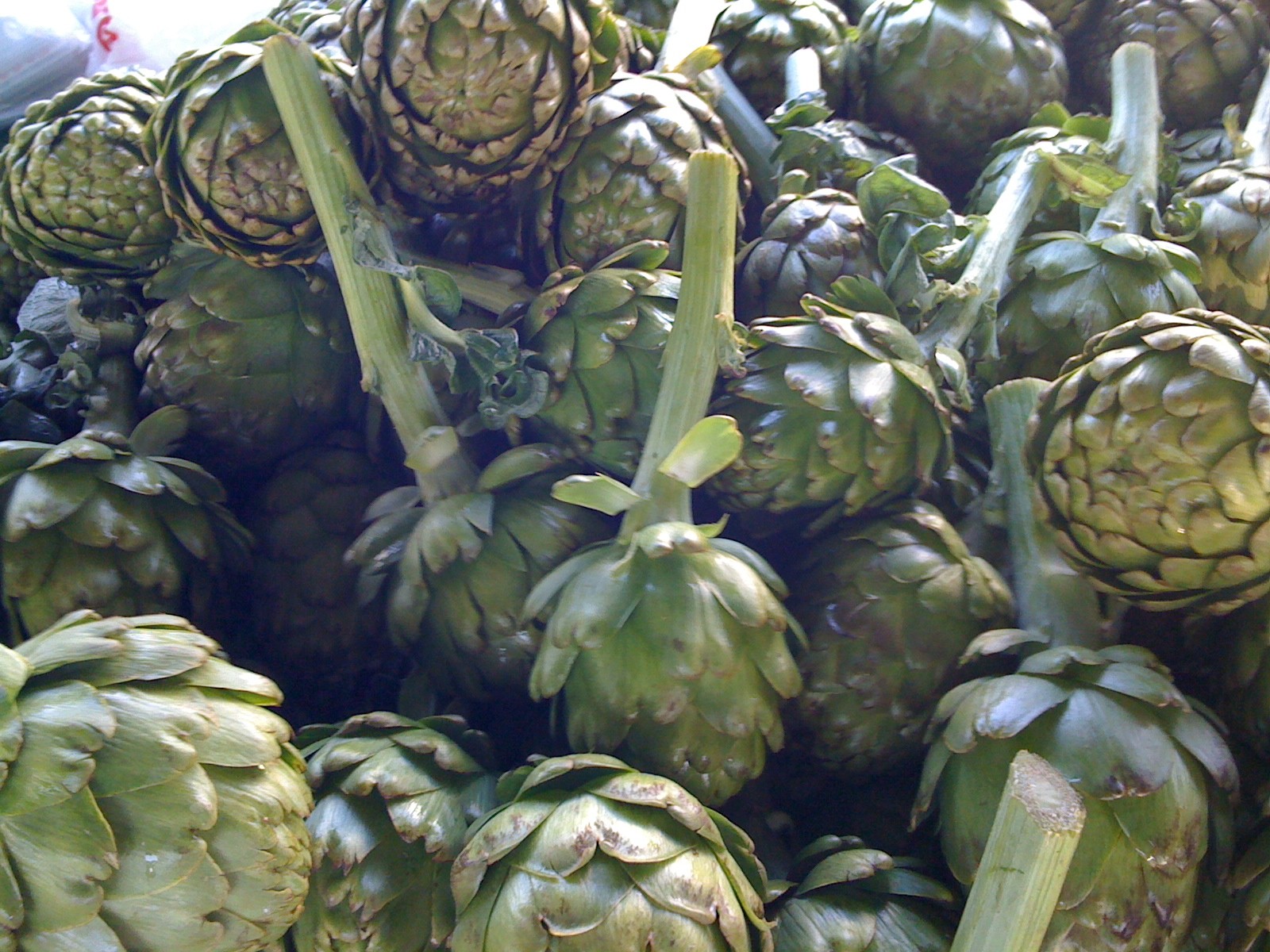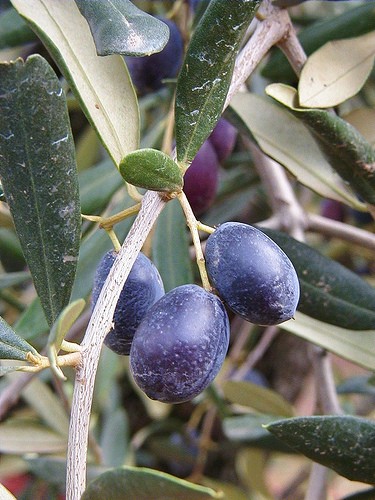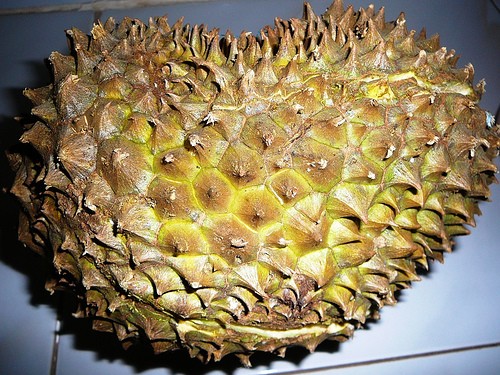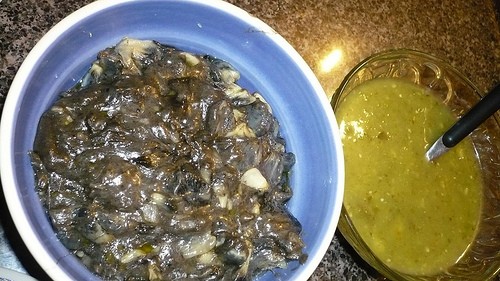Certain foods are obviously tasty just from the look; ripe strawberries, rice and rabbits all look delicious. Certain foods don't look delicious, but are close enough to delicious-looking food to understand how humankind got started eating it; bitter melon, cow's milk and Seville oranges fall into this category.
Then there are foods that just plain look poisonous, or require so much processing that it's hard to figure out how they became part of our diet. It had to be desperation; necessity is the mother of invention, and starvation is a powerful motivator to get creative.
Read on for five things in this category.

]
Artichokes
A bud with thorns on a plant often bigger than humans with irritating
hairs on the stem, with a bristly choke inside that can asphyxiate
humans foolish enough to try to consume it. Undercook it and your
throat will burn; overcook it and your eyes will burn. You have to
scrape the flesh off the leaves in order to finish eating it, and three
quarters of the original mass of the food is still there when you've
eaten all you can. Sounds like dinner, right? There are all sorts of
warning signs not to eat this giant thistle, yet somehow the people of
the Mediterranean managed to figure out not only how to eat artichokes,
but how to distill in them into Cynar, the frat house prank of liqueurs.
Olives

Ever tasted an olive right off the tree? It's a joke that gets played
on newcomers to California (and other olive-growing places in the
world). Someone picks a ripe olive off a tree, hands it to the patsy,
and hilarity ensues as the poor guy's mouth tries to tie itself in
knots. Olives are as bitter as gall. How someone figured out that these
little alum bombs become not only edible but damn tasty after being
soaked in salt (or salt solution) for a while speaks volumes either
about humankind's ingenuity or our sheer bloodymindedness. Remember,
though, without olives there would be no martinis; we'd all be drinking
gibsons and fussing about the correct size of our cocktail onions.[

Eggs
It's astonishing that eggs play such a large role in our diets, given
that they are essentially chicken abortions. Who on earth was the first
person desperate enough to eat an egg? Seriously, what was the thought
process behind that decision? “That animal just made a loud sound and
exuded a round thing from inside its body. Let's investigate.”
Fresh-laid eggs don't smell inviting, and there's the idea that the
yolk is technically the protoplasm of life, yet somehow it wormed its
way into our existence. We blame the French and their desperate need
for a natural emulsifier for their fussy sauces. Regardless of whose
fault it is, a soft-boiled egg with toast for dipping is the breakfast
of champions.
Durian

The so-called “king of fruits” is so pungent that it has been banned
from public transportation in Malaysia, Thailand and Singapore. To
describe durian's odor as “sewer-like” is frankly speaking too kindly
of it. It's spiky, painful and the scent could stop a bear at ten
meters; it can't be eaten until it's so ripe (in both senses of the
word) that it literally drops off its branch, like a pointed
cannonball. Open it up and it looks like brains (braaaaaaaains). Someone, possibly not a confused zombie, decided to eat this the first time, and it's been
traded ever since. The taste is slightly buttery and stereotypically
“tropical”, like a cross between pineapple and banana, and it goes
great in shakes or ice cream. Good thing stores sell it frozen, though.
Huitlacoche
One could be forgiven for not knowing what this is, and knowing its
English name doesn't help its case in the slightest. The name is bad
enough (“corn smut” sounds like creepy vegetable-oriented pornography,
not food), but seeing it is enough to put any reasonable, non-starving
human off his or her feed. Huitlacoche is the fungus that grows on
infected kernels of corn; it is mostly black, with fuzzy white portions
and engorged corn kernels tucked away inside. Whoever ate it for the
first time was truly facing starvation: it looks like the byproduct of
a corn and beer bender. Yet its inky grossness conceals an earthy,
almost chalky mushroom flavor that gives it the more palatable moniker
of “Mexican truffle”.


